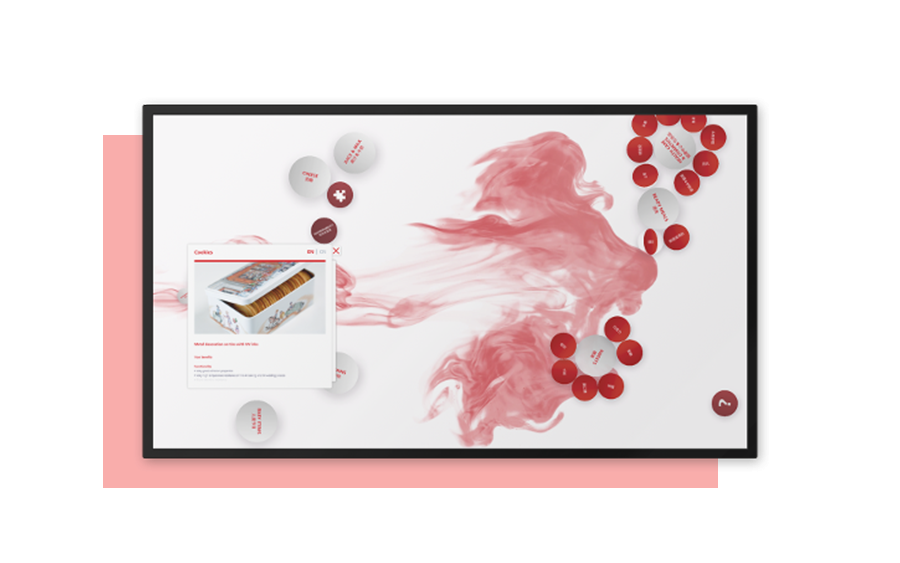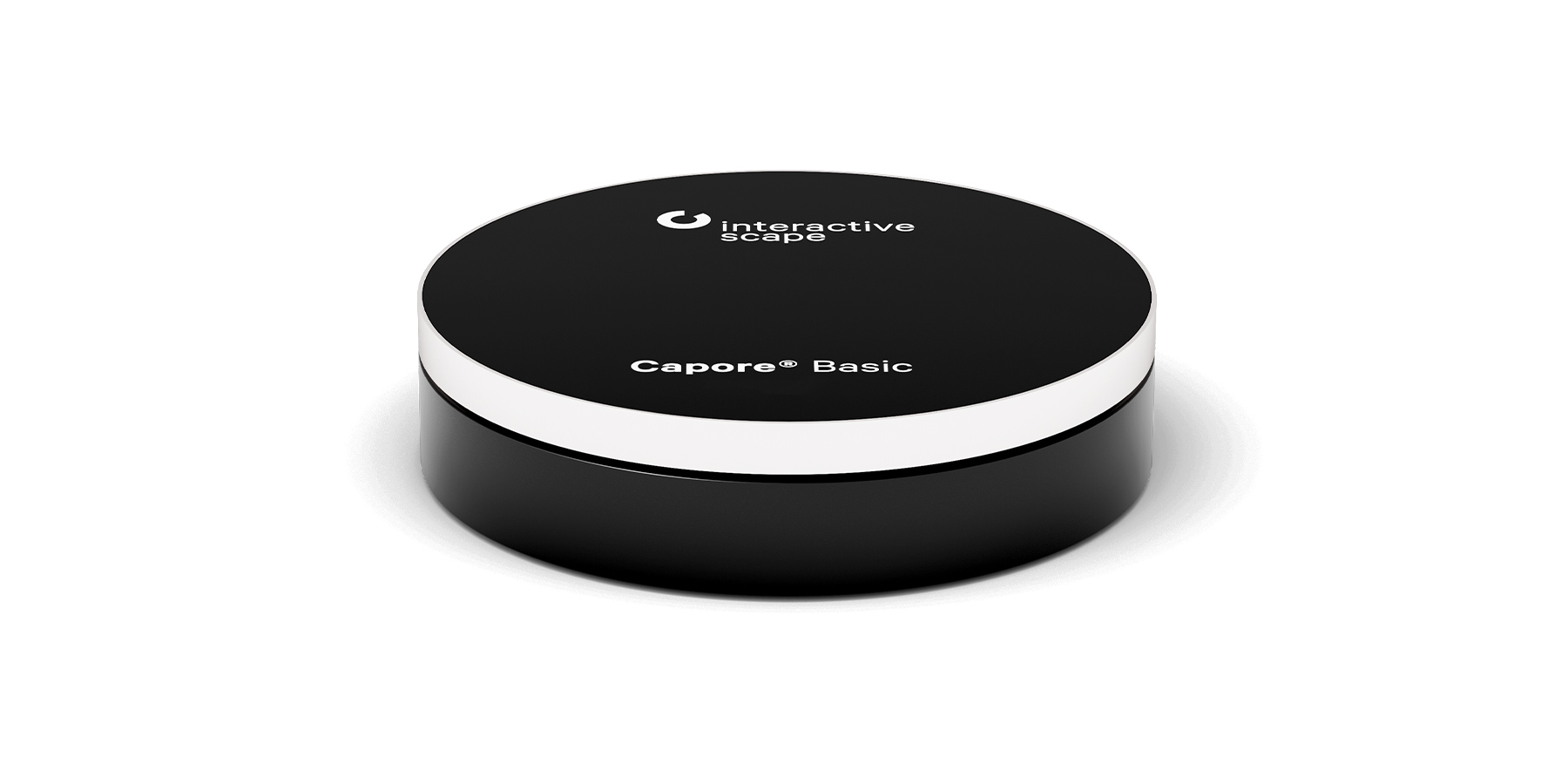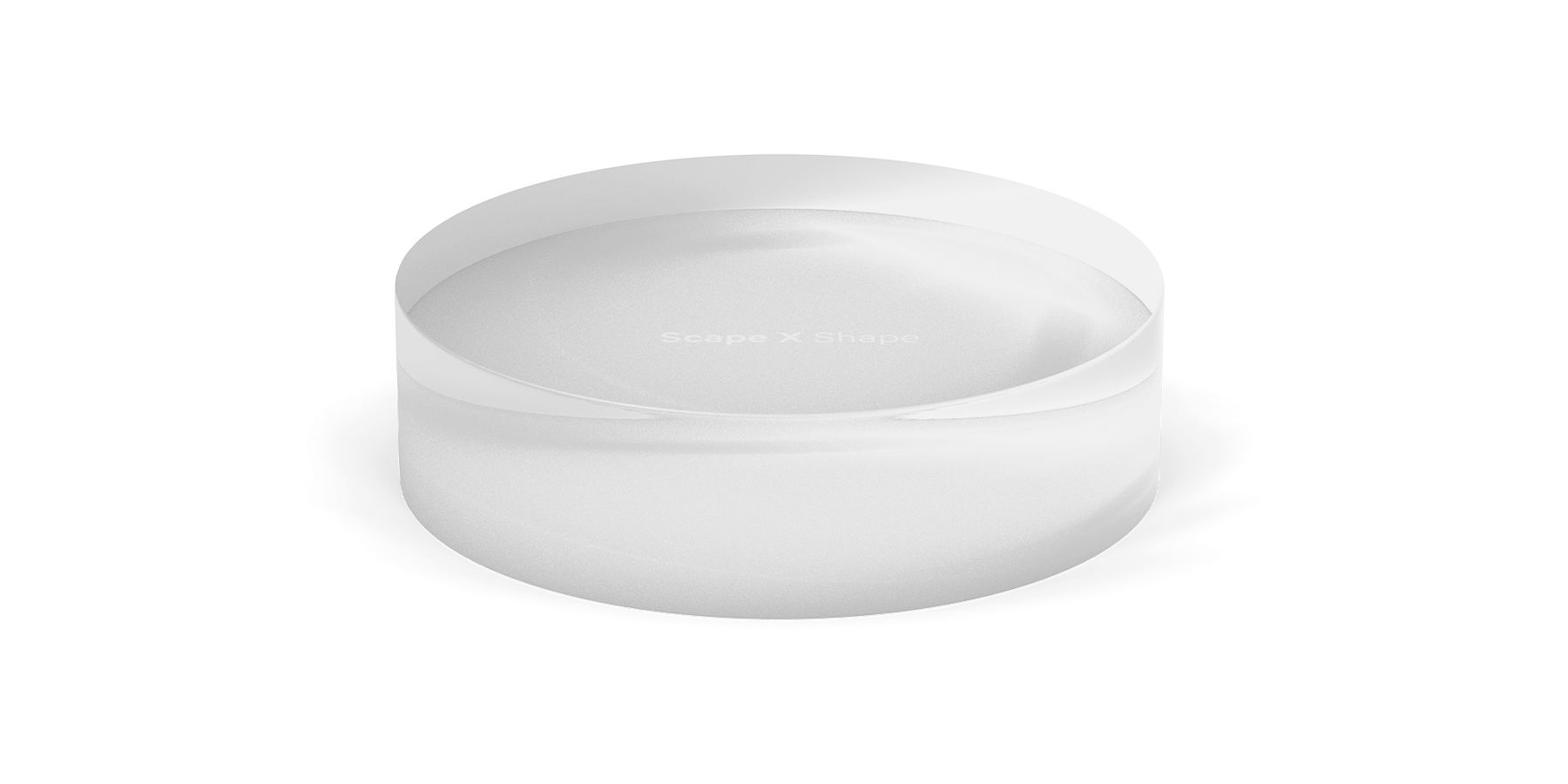

You have seen a multi-touch table at an exhibition, in a showroom or at a trade fair, were impressed by the object recognition and would like to implement the same? Or do you already have an application but want to integrate object recognition? Then you've come to the right place.
What is needed for a multitouch application with object recognition? What do I show on the display and how? And how do I create an impressive experience for the user? Don't worry - our customers are often faced with these questions.
A multi-touch solution with object recognition consists of four components:
First of all, you need a multi-touch capable display. This can easily be built into existing installations or bought already with a table frame. If you don't have a display yet and are faced with the decision, feel free to check out this post to find out more about the most common displays and technologies.
If the table does not already have an integrated PC, a PC is needed to play the application. We recommend quiet, powerful PCs and will be happy to advise you on the exact specifications.

In order for objects to be recognised and interact with the application, an object recognition module is required. The module usually consists of software and hardware components that are already built into the display or table. Decide what kind of objects you want the display to recognise, how many, and what they should look like - perhaps you need transparent objects or a large number of IDs, for example - and then choose the appropriate module based on your needs. Not every type of object recognition works with every display - read on to find out more about object recognition.
This is where it gets particularly exciting: what story do you want to tell? Who is you target group and how do you want to reach them? What content should be presented and how? It is ideal if you already have an idea of your story and audience as well as sufficient content - this includes, for example, high-resolution images, texts or videos. Object recognition offers many possibilities, and in the concept phase you can determine how interaction with your content will take place. Product-related content can be linked to a replica of the product and displayed by placing it on the table, or the objects can be used to control different parts of the application.
If you want to adjust your content or the design of the application regularly, pay special attention to the content management system. A web-based CMS allows you to easily add new content, exchange content or make design adjustments via the web browser without having to contact the developers of the application.

Last but not least - all that's missing now are the right objects to bring your content to life. Depending on what you want to do with the objects, different types of objects are suitable. If you want to attach the objects as tags to already existing items, small, thin objects are best suited so that the focus remains entirely on your product. For quick and easy customisation in the CMS, transparent objects under which you can display content such as images, logos or GIFs are suitable. Perhaps custom objects are also an option for special projects such as showrooms - we would be happy to advise you!

